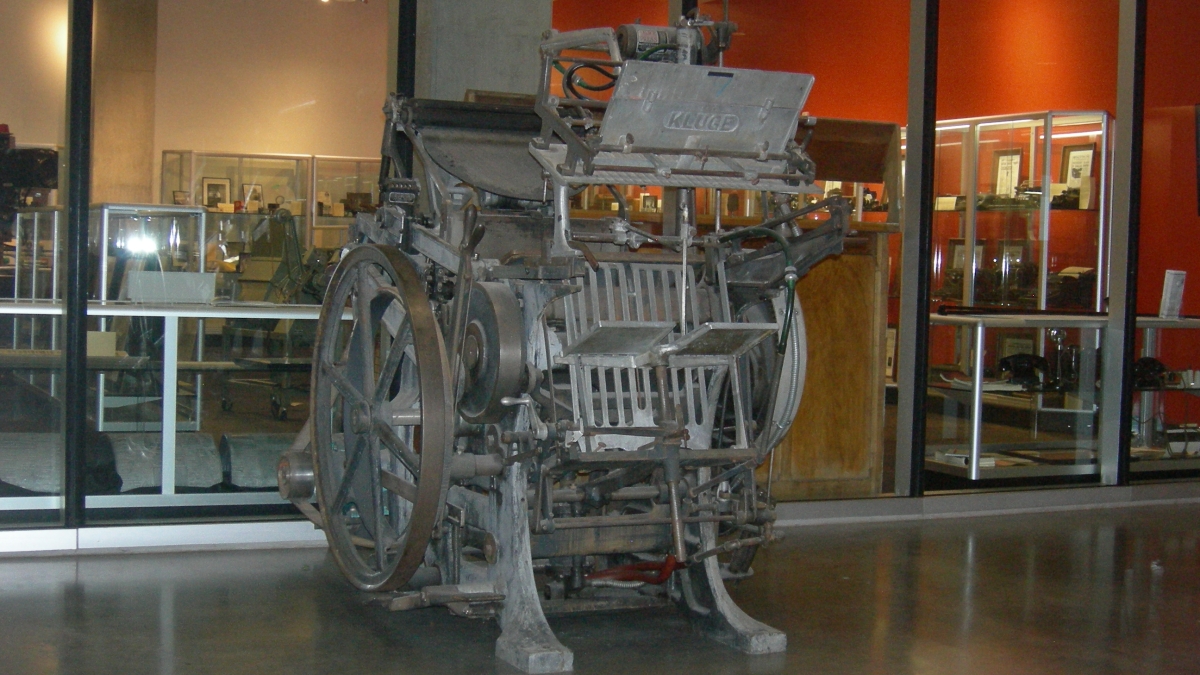Cronkite School acquires historic Arizona Highways printing press

Arizona State University students can see how publications were made before the advent of computers through a printing press exhibit at the Walter Cronkite School of Journalism and Mass Communication.
The Phoenix Museum of History donated a 1940s printing press and composing table that are on display outside of the Cronkite Gallery, the school’s journalism museum. The printing press, weighing more than a ton, produced Arizona Highways, the state’s official travel publication, published by the Arizona Department of Transportation.
“It’s important to understand the evolution of technology,” said Win Holden, publisher of Arizona Highways. “We’re rapidly moving toward a day when there may not be any printing presses. This exhibit keeps one foot firmly in the past for students.
Cronkite Gallery curator John Craft said the printing press, manufactured by Brandtjen & Kluge, featured the world’s first successful automatic paper feeder for platen printing, a process where metal plates covered with ink press against paper. Manufacturer’s documents said Kluges, as they were called, could print up to 3,500 sheets per hour. The exhibit also includes a composing table where workers would lay out metal type for the press.
According to Brandtjen & Kluge, the printing press was initially sold in 1948 to Phelps Dodge, a Phoenix mining company. The printing press was eventually acquired by W.A. Krueger, the printing company responsible for producing Arizona Highways.
Holden estimated the printing company used the press until the mid-1960s before it was retired for newer printing technology. During that time period, famous landscape photographer Ansel Adams contributed prints to the magazine.
In the early 2000s, Arizona Highways acquired the Kluge printer and composing table from the printing company, which had since merged several times with other printers, Holden said. Arizona Highways donated it to the Phoenix Museum of History, where it was on display until the museum closed in 2009. The press was in storage prior to arriving at Cronkite.
Craft said the printing press is a welcome addition to the Cronkite Gallery.
“If you’re a student today, your whole world is the size of a smartphone,” he said. “This generous donation will help students understand the journalism technology of the past.”
Opened in 2008, the Clifford Gallery features hundreds of items, including pipes and books from Walter Cronkite’s New York office, a microphone used by Edward R. Murrow and collections of typewriters and broadcast editing equipment. The 1,500-square-foot gallery also houses artifacts of local significance, such as a Phoenix Gazette newspaper box with a copy of the last issue from 1997 and early mini-cam equipment used by the news department of KOOL-TV, the forerunner of KSAZ-TV in Phoenix.
Most of the items were donated or loaned by individuals and organizations, including the Cronkite family, the House of Broadcasting and The Arizona Republic.
The Cronkite Gallery is open to the public. It is located on the second floor of the Cronkite School on ASU’s Downtown Phoenix campus.